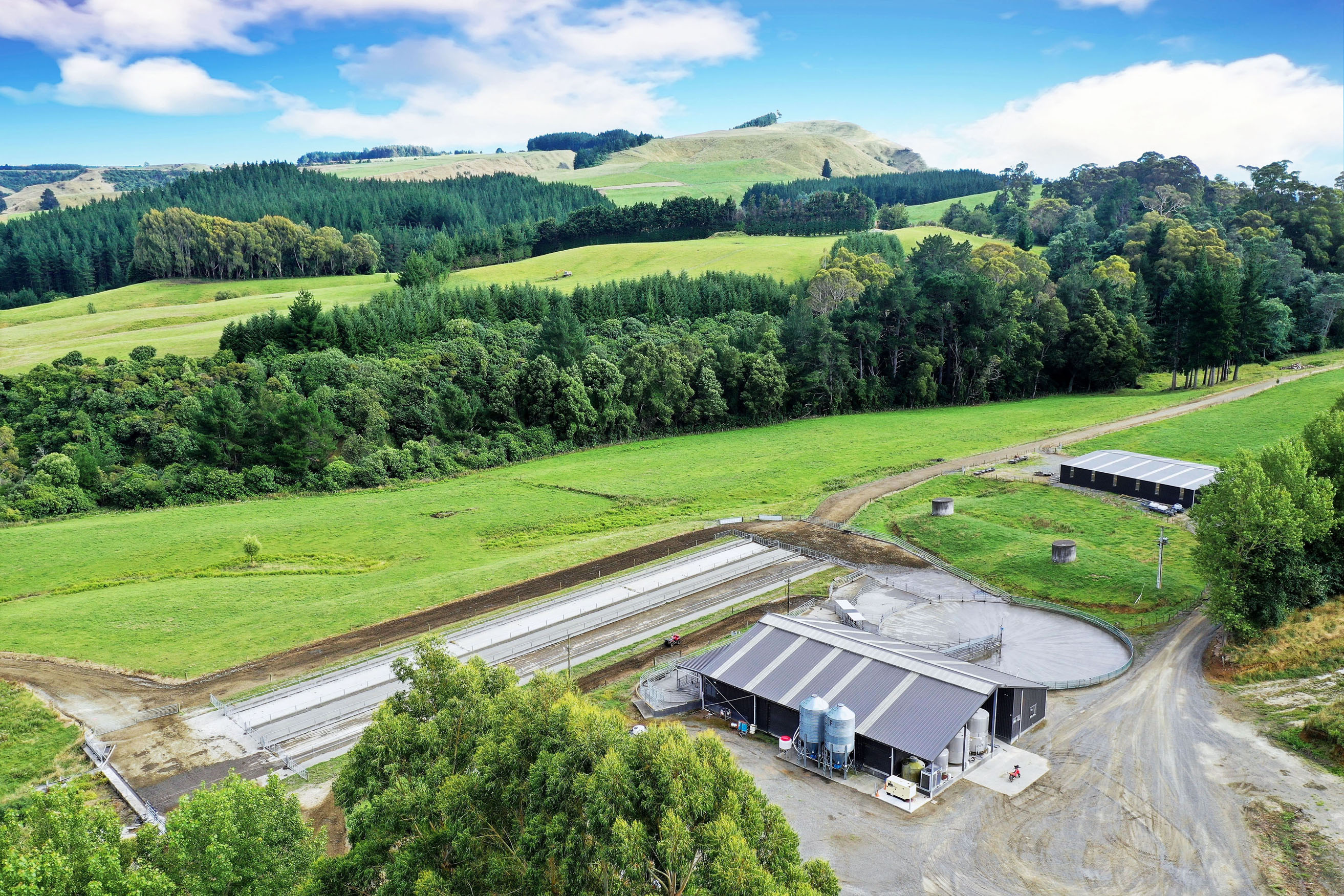Hawke’s Bay dairy farm opportunity on market
A top-end Patoka dairy farm with consents in place to
increase its output by 30 percent for at least the next
10-years has been placed on the market for sale. With
Hawke’s Bay’s land values around half of some other
districts, the returns from this property would likely be
stronger than anywhere else.
Raumati Dairy some 41-kilometres north-west of Napier is a 458-hectare property milking a herd of between 730 – 750 cows, but with consent from Hawke’s Bay Regional Council to stock up to 1000 cows through to 2028. It ticks all the environmental boxes too with riparian areas fenced off. A 60 bail rotary, 600 cow feed pad and all the bells and whistles make this a must view.
Over the past three seasons, Raumati Dairy has been operating a once-a-day milking programme to produce up to 252,230 kilogrammes of milk solids annually. When operating under a twice-a-day milking programme, the fam produced up to 300,474 kilogrammes of milk solids annually.
The property consists of 319 hectares of easy contour ryegrass and clover paddocks, 25 hectares of medium contour land, 37.7 hectares of medium to steep hill country, and 77.3 hectares of steep country comprised of gullies and gorges.
Combined, the property has an effective milking area of 330 hectares of sandy loam-based soil. Raumati Dairy is subdivided into 108 free-draining paddocks – with some 23 kilometres of fencing erected since 2005, much of it along the 10.6 kilometres of gravelled stock movement lanes.
Now the freehold property at 3629 Puketiritiri Road in Patoka is being marketed for sale by auction at 2pm on March 29 through Bayleys Napier. Salespeople Tony Rasmussen and Gavin Franklin said Raumati Dairy was located at between 260 – 450 square metres above sea level, and had a recorded annual rainfall of approximately 1,700mm.
“The farm is currently operating under a low-input model – milking just once a day, and milking a herd size substantially below its capacity. Both of these aspects are opportunities for substantially increasing production at Raumati Dairy,” Mr Rasmussen said.
He said the property operated an extensive pasture renewal fertilisation programme through annual application of calcium, magnesium, potassium, sodium and sulphur nutrients in addition to the effluent spread.
“Water for the Raumati Dairy is drawn from two springs on a neighbouring farm through a consented easement arrangement allowing for extraction of 865 cubic metres daily. Water is stored in a trio of 30,000 litre tanks before being gravity-fed to eight additional 30,000 litre tanks servicing both the dairy shed and paddocks,” Mr Rasmussen said.
Farm building infrastructure on the Patoka
property consists of:
• A 60-bale rotary milking shed
built in 2008 with in-shed feeding system and herd
monitoring technology, the shed also consists of an
electrical room, office, and staff room
• A large 12
bay calf-rearing shed with indoor and outdoor pens, two
fully-enclosed lock-up bays, and a pair of lockable
workshops.
• A 600-cow feed pad with spot
lighting
• A herringbone vet race with cattle crush,
pens and load out facility
• An effluent treatment pond
consented to take in excrement from a herd of up to 1000
cows with a pumping plant spreading byproduct through some
3.1 kilometres of lines across 60-hectares
• A two-bay
implement shed and three hay-storage sheds
and
• A
trio of palm kernel/fertiliser bins built on a concrete pad
with the capacity to hold up to 15 tonnes each.
Meanwhile,
accommodation on the property consists of:
• A
four-bedroom/two-bathroom character homestead constructed in
the 1930s and upgraded in 2006
and
• A pair of
comfortable three-bedroom staff cottages.
Mr Franklin said the farm had operated a comprehensive feed cropping and pasture management programme since 2013 - with some 60-hectares of farmland cultivating a mix of chicory, kale, turnips and fodder beet, yielding up to 30 tonnes of feed per hectare.
He said the Patoka region in which Raumati Dairy was located was renowned for its plentiful rainfall.



 Stats NZ: Retail Spending Flat In The September 2024 Quarter
Stats NZ: Retail Spending Flat In The September 2024 Quarter Antarctica New Zealand: International Team Launch Second Attempt To Drill Deep For Antarctic Climate Clues
Antarctica New Zealand: International Team Launch Second Attempt To Drill Deep For Antarctic Climate Clues Vegetables New Zealand: Asparagus Season In Full Flight: Get It While You Still Can
Vegetables New Zealand: Asparagus Season In Full Flight: Get It While You Still Can  Bill Bennett: Download Weekly - How would NZ telecoms cope with another cyclone
Bill Bennett: Download Weekly - How would NZ telecoms cope with another cyclone NZ On Air: Firm Audience Favourites Lead NZ On Air Non-Fiction Funding
NZ On Air: Firm Audience Favourites Lead NZ On Air Non-Fiction Funding Insurance and Financial Services Ombudsman: Woman Gets $40k More After Disputing Insurer’s Decision
Insurance and Financial Services Ombudsman: Woman Gets $40k More After Disputing Insurer’s Decision



